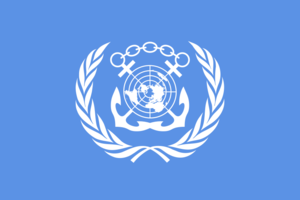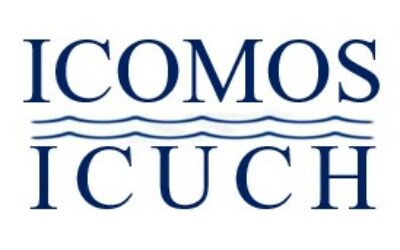UCH at 1982 United Nations Convention on the Law of the Sea, UNCLOS
An incomplete regime...
UNCLOS does not explicitly define Underwater Cultural Heritage (UCH), which it refers to merely as “archaeological and historical objects.” Such a definition cannot be inferred from the text either. What does seem clear is that UCH was deliberately excluded, from an early stage, from the category of “natural resources” as used in UNCLOS.
Archaeological objects are mentioned only twice in the Convention: in Article 149, concerning UCH located in the Area, and in Article 303, which applies to all maritime zones. The drafting of these provisions was shaped by several factors:
- At the time of the negotiations, the risks and threats to UCH were not perceived with the urgency they are today.
- Some of the principal negotiating States still regarded UCH as a commodity subject to appropriation, salvage, or trade.
- The issue of UCH protection was introduced late in the process, after the “jurisdictional balance” had already been settled. These circumstances explain why the regime has been described, with some justification, as contradictory and counterproductive.

Examples of Interpretative Issues
Article 149
Article 149 of UNCLOS provides that UCH found in the Area “shall be preserved or disposed of for the benefit of mankind as a whole, particular regard being paid to the preferential rights” of certain States. The language is imprecise: while “preserved or disposed” appears as an alternative, “preservation” may be interpreted as imposing a general duty of protection, whereas “disposal” could imply the exercise of ownership (dominium).
The provision envisages, first, that the preservation or disposal of UCH should be carried out for the benefit of humankind as a whole, and second, that the preferential rights of some States must be taken into account. However, no hierarchy is established between these two criteria, nor is there any guidance on how to reconcile them. Proposals for a role to be played by the International Seabed Authority (ISA) and for the establishment of a dispute settlement mechanism to resolve conflicts between “benefit” and “preferential rights” were removed early in the drafting process. Nevertheless, the wording of Article 149 indicates that private ownership rights should, at least to some extent, be subordinated to the public interest.
Despite this, Article 149 provides no clear rules on the treatment of UCH in the Area, nor on which authority should act or how, rendering the provision of little practical utility.
Article 303
Article 303 of UNCLOS also fails to establish a coherent regime for UCH.
Paragraph 1 contains the clearest statement: “States have the duty to protect objects of an archaeological and historical nature found at sea and shall cooperate for this purpose.” This dual duty—protection and cooperation, albeit vaguely framed—remains the general principle governing UCH today.
Paragraph 2, however, creates an ambiguous regime for UCH located in the contiguous zone. It is based on a presumption and a legal fiction, namely that the unauthorized removal of UCH from this zone constitutes a violation of the laws and regulations that coastal States are entitled to enforce under Article 33(1) UNCLOS. Since the existence of a contiguous zone depends on its formal declaration by the coastal State, the protection of UCH within it is highly contingent on (i) the content of such a declaration and (ii) the actual and detected removal of UCH (but not other types of damage). In 2022, the International Court of Justice clarified the scope of this paragraph, recognizing the coastal State’s general archaeological jurisdiction within its contiguous zone.
More problematic still is paragraph 3, which preserves “the rights of identifiable owners, the law of salvage or other rules of admiralty, or laws and practices with respect to cultural exchanges.” As a non-prejudice clause, it permits the application of admiralty law, including salvage, to UCH, thereby complicating its legal status. This is problematic because: (i) “the rights of identifiable owners” may conflict with the “preferential rights” of other States or communities; (ii) the hierarchy between such rights (preferential or otherwise) and any potential salvors’ rights remains unresolved; and (iii) the provision does not specify which other rules of maritime law may apply to UCH.
Finally, paragraph 4 of Article 303 preserves “other international agreements and rules of international law regarding the protection of objects of an archaeological and historical nature.” The negotiators wished neither to prejudice existing agreements—such as the 1972 arrangement between Australia and the Netherlands on the Old Dutch Shipwrecks in Australian waters—nor to prevent future ones. The latter category includes the 2001 UNESCO Convention, which may be regarded as an “external rule” to UNCLOS, i.e., a body of rules relevant to the interpretation and application of UNCLOS, following the reasoning of the International Tribunal for the Law of the Sea in its 2024 advisory opinion.
ICUCH'S Conclusion
In sum, the regime established by UNCLOS with respect to UCH is marked by ambiguities, lacunae, and contradictions that significantly limit its practical effectiveness. The absence of a precise definition of UCH, the lack of a clear hierarchy between competing interests, and the preservation of admiralty law and private rights have resulted in a fragmented and uncertain legal framework. While Articles 149 and 303 acknowledge both the collective interest of humankind and the duties of States to protect and cooperate, they fail to provide concrete mechanisms for implementation. This explains why subsequent instruments—most notably the 2001 UNESCO Convention—have emerged to complement and clarify UNCLOS, offering a more coherent framework for the protection of UCH. Ultimately, the role of UNCLOS is best understood as laying a foundational but incomplete regime, one that requires external interpretive and normative support to meet contemporary challenges in the safeguarding of UCH.
